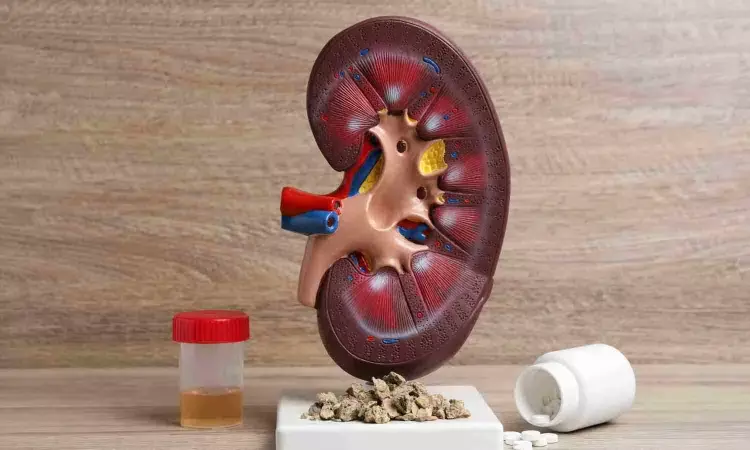- Home
- Medical news & Guidelines
- Anesthesiology
- Cardiology and CTVS
- Critical Care
- Dentistry
- Dermatology
- Diabetes and Endocrinology
- ENT
- Gastroenterology
- Medicine
- Nephrology
- Neurology
- Obstretics-Gynaecology
- Oncology
- Ophthalmology
- Orthopaedics
- Pediatrics-Neonatology
- Psychiatry
- Pulmonology
- Radiology
- Surgery
- Urology
- Laboratory Medicine
- Diet
- Nursing
- Paramedical
- Physiotherapy
- Health news
- Fact Check
- Bone Health Fact Check
- Brain Health Fact Check
- Cancer Related Fact Check
- Child Care Fact Check
- Dental and oral health fact check
- Diabetes and metabolic health fact check
- Diet and Nutrition Fact Check
- Eye and ENT Care Fact Check
- Fitness fact check
- Gut health fact check
- Heart health fact check
- Kidney health fact check
- Medical education fact check
- Men's health fact check
- Respiratory fact check
- Skin and hair care fact check
- Vaccine and Immunization fact check
- Women's health fact check
- AYUSH
- State News
- Andaman and Nicobar Islands
- Andhra Pradesh
- Arunachal Pradesh
- Assam
- Bihar
- Chandigarh
- Chattisgarh
- Dadra and Nagar Haveli
- Daman and Diu
- Delhi
- Goa
- Gujarat
- Haryana
- Himachal Pradesh
- Jammu & Kashmir
- Jharkhand
- Karnataka
- Kerala
- Ladakh
- Lakshadweep
- Madhya Pradesh
- Maharashtra
- Manipur
- Meghalaya
- Mizoram
- Nagaland
- Odisha
- Puducherry
- Punjab
- Rajasthan
- Sikkim
- Tamil Nadu
- Telangana
- Tripura
- Uttar Pradesh
- Uttrakhand
- West Bengal
- Medical Education
- Industry
Radiological Signs of Stone Impaction Offer No Added Predictive Value for Spontaneous Passage, Study Finds

Sweden: In a recent retrospective study published in Urolithiasis Journal, researchers have challenged the utility of radiological signs of stone impaction (RSSI) in forecasting the spontaneous passage of urinary stones. The findings indicate that these radiological indicators, commonly used to predict whether a stone will pass on its own, may not significantly enhance the predictive value of stone size alone.
The findings indicate that RSSI does not significantly improve the accuracy of predicting spontaneous stone passage based on stone size alone. Additionally, ureteral wall thickness (UWT) measurements show moderate reliability and are subject to considerable variability between different observers.
Stone size and location are crucial for predicting spontaneous stone passage (SSP), yet the impact of radiological signs of stone impaction (RSSI) has received limited focus. The research by Marcin Popiolek, Department of Urology, Faculty of Medicine and Health, Örebro University, Örebro, Sweden, and colleagues seeks to assess whether incorporating RSSI with stone size improves SSP predictions and to evaluate the consistency of UWT measurements across different observers.
For this purpose, the researchers analyzed data from 160 patients with a single upper or middle ureteral stone identified via acute non-enhanced computed tomography (NCCT). Patient information was gathered from medical records, and measurements of radiological signs of stone impaction —including UWT, ureteral diameters, and average attenuation above and below the stone—were conducted on NCCT scans by four independent readers who were unaware of the clinical outcomes. The study cohort was predominantly male (70%) with an average age of 51 ± 15 years.
The following were the key findings of the study:
- SSP occurred in 61% of patients over 20 weeks.
- The median stone length was 5.7 mm and was significantly shorter in patients who passed their stones at short- (4.6 versus 7.1) and long-term (4.8 versus 7.1) follow-up.
- For stone length, the area under the receiver operating characteristic curve (AUC) for predicting SSP was 0.90 and only increased to 0.91 when adding ureteral diameters and UWT.
- Ureteral attenuation did not predict SSP (AUC < 0.5).
- Interobserver variability for UWT was moderate, with ± 2.0 mm multi-reader limits of agreement (LOA).
The study faced limitations, including non-standardized follow-up and the potential for missing small, radiolucent stones on IVUs. The researchers noted that despite this, the risk of misclassification is deemed low. Multiple observers helped reduce bias, though simultaneous measurements on different reformations could introduce some subjectivity and collinearity.
In conclusion, while stone size remains a strong predictor for the spontaneous passage of upper ureteral stones, radiological signs of stone impaction do not provide additional clinically significant predictive value.
Reference:
Popiolek, M., Lidén, M., Georgouleas, P. et al. Radiological signs of stone impaction add no value in predicting spontaneous stone passage. Urolithiasis 52, 114 (2024). https://doi.org/10.1007/s00240-024-01604-0
Dr Kamal Kant Kohli-MBBS, DTCD- a chest specialist with more than 30 years of practice and a flair for writing clinical articles, Dr Kamal Kant Kohli joined Medical Dialogues as a Chief Editor of Medical News. Besides writing articles, as an editor, he proofreads and verifies all the medical content published on Medical Dialogues including those coming from journals, studies,medical conferences,guidelines etc. Email: drkohli@medicaldialogues.in. Contact no. 011-43720751


